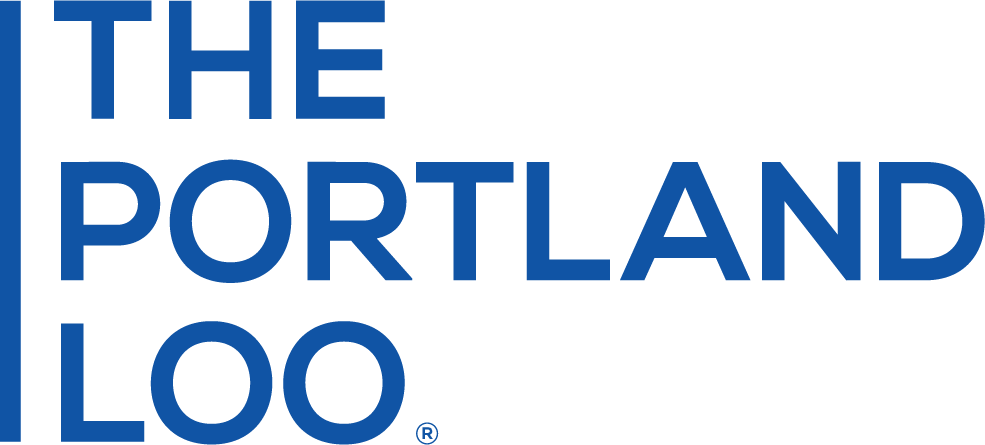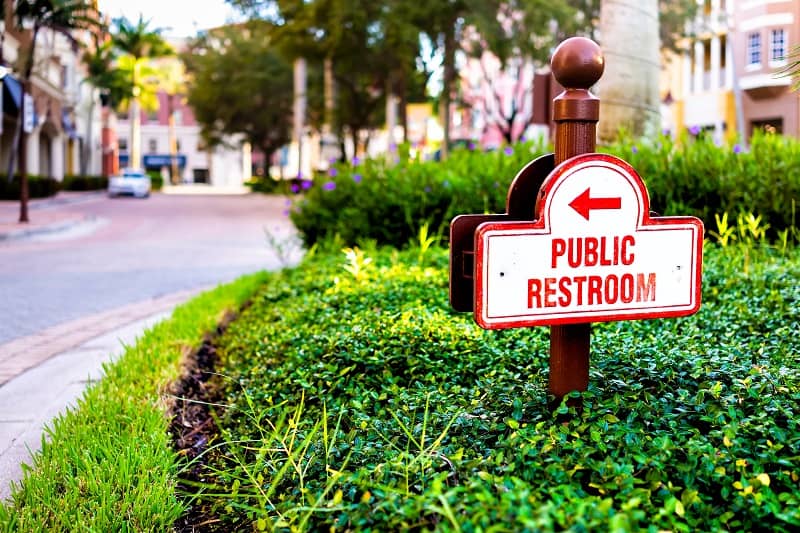For decades, city architects and city planners have been bound by the chains of conventional restroom designs. Now, the Portland Loo is emerging as the commode crusader to rescue cities from the clutches of urban space troubles. Its modern, out-of-the-box design gives cities more flexibility and breathing space (literally and metaphorically) to design, build, and maintain optimized public spaces.
Limited footprint
As far as public restrooms go, the Loo is a super space-saver. It measures a modest 6 feet (1.8 m) x 10.5 feet (3.2 m) which proves that public restrooms don’t have to eat up valuable public space. The Loo is still big enough to accommodate strollers, wheelchairs, bicycles, and small families despite its minimalist design. This limited footprint gives cities more space for gardens, parks, playgrounds, art displays, and other public amenities while still giving citizens a viable place to use the restroom. Plus, the Loo features an outdoor sink so two people can use it simultaneously.
Free-standing functionality
In contrast to the monstrous public restrooms that dominate many cities in the US, the Portland Loo is a self-contained and standalone structure. Once it’s hooked up to the city’s sewage, water system, and electrical grid, it’s completely self-sustainable. It doesn’t rely on any other structures to operate. That not only reduces the amount of land used up for a public toilet, but it also gives city architects and planners more freedom when it comes to choosing a location. Say goodbye to being a hostage to location!
Crime-resistant construction
Unfortunately, some potties attract seedy behavior due to their closed-off and hyper-private designs. This not only keeps people from using the restroom (which is kinda the whole point of having a public toilet), but it also prevents citizens from enjoying the surrounding public space. In crime-fighting fashion, the Portland Loo is built to deter unattractive behavior. Damage and graffiti-resistant walls prevent vandalism, blue lights limit intravenous drug use, and the open-slat design alerts public officials to any untoward activity.
Further Reading: How the Loo Can Help Alleviate the Houseless Crisis in Your City
Space-saving shape
Thought restrooms needed four walls and a roof? Think again! The Loo is flushing away traditional design concepts in favor of a revolutionary space-saving shape. The patented cylindrical design maximizes space on the inside while limiting the structure’s footprint. The result is a comfortable, functional, and accommodating restroom that makes other toilets and users jealous. Using the Loo is a stress-free, pleasant experience for everyone no matter who they are.
Higher satisfaction
Good city planning makes spaces comfortable when being used, but great city planning encourages people to stick around for long periods of time. With the Loo, cities can offer residents and visitors alike an accessible, dignified, and dependable place to go. That means more people spending more time and more money which results in a stronger, more resilient economy. Who thought a toilet could have such a high ROI?
Increased flexibility
City architects and planners are used to restrooms being immovable obstacles that need to be planned and designed around. The opposite is true for the Loo. This modern structure’s innovative and minimalist design allows for flexible placement throughout the city. It works perfectly in business districts, transit hubs, parks, residential areas, and other high-traffic locations. City officials can more easily design for an equitable distribution of amenities throughout the city.
Round-the-clock availability
Public spaces are used at all hours of the day and night which means people need access to a restroom around the clock. Only providing a restroom during “business hours” leaves the city’s most vulnerable populations without a reliable place to go which inevitably leads to dirtier streets. That’s why the Portland Loo is available 24/7/365. Any time of the day or night, it’s available for all users.
What started out as a Portland-based project has now spread to over a dozen cities spanning the entire US and even into Canada! If your city could use a Loo, feel free to contact us today for more information.


